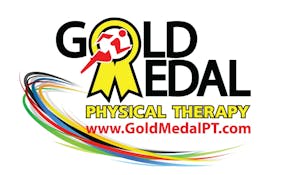A woman’s body is an amazing thing. During pregnancy, many curious changes occur to prepare expecting mothers for child birth — some wonderful, and some not quite ideal. Today, we’re going to talk about one of the most common post-pregnancy maladies: Diastasis Recti.
What is Diastasis Recti?
Simply put, Diastatis Recti is the condition in which the rectus abdominis — the muscles that make up the center of the abdominal wall, more colloquially known as the six pack — separate. Typically, this is caused by weakness or stretching of the Linea Alba, the connective tissue of the rectus abdominis.
Generally speaking, all women experience some form of abdominal separation during pregnancy. Hormonal changes in the body are what causes the uterus to expand in order to facilitate the growing fetus. The issue, however, is whether or not the abdominals return to their pre-pregnancy form. To which there are a variety of factors that influence its development. The condition is most common in women over the age of 35, and there exists an increased risk for pregnancies of a higher birth weight, as well as having more than one child.
How Can You Tell if You Have It?
The tell tale sign of Diastasis Recti is the ever famous belly bulge — a ridge at the mid-line of the abdomen, as well as low back pain and pelvic pain with certain tasks. There’s actually even a handy way that you can test yourself right at home! Simply lay comfortably on your back, with your knees bent. From this position, lift your head and shoulders from the floor, and take a look at your abdomen. If you see a separation or gap in the middle, then you most likely have Diastasis Recti.
But Can Physical Therapy Help?
Definitely! Physical therapy is all about education: teaching patients how their body works in the context of their condition, and empowering them both physically and mentally. So sure, you may be suffering from Diastasis Recti right now; however, that’s not to say it’s a lifelong problem. As a result of Diastasis Recti, it’s not uncommon for the surrounding muscles of the core to become tight and painful. Think of it as your body’s way of protecting you; the stronger muscles try to pick up the slack of the weakened abdominal muscles.
While attending physical therapy, your clinician can create a diverse training program geared toward your needs, with a focus on improving your core strength and endurance. They may also take you through a range of postural exercises and scenarios to ensure that you’re utilizing your muscles in the most effective way possible. Let’s say, for example, that you struggle with getting out of bed. A physical therapist may teach you how to “log roll,” a technique to get out of bed without flexing the spinal column and putting more stress on your abdomen.
If you’re concerned about your condition, we advise you to contact your doctor. A conversation with your primary care physician may be helpful in deeming if physical therapy can help you, and start you on a road to recovery.
